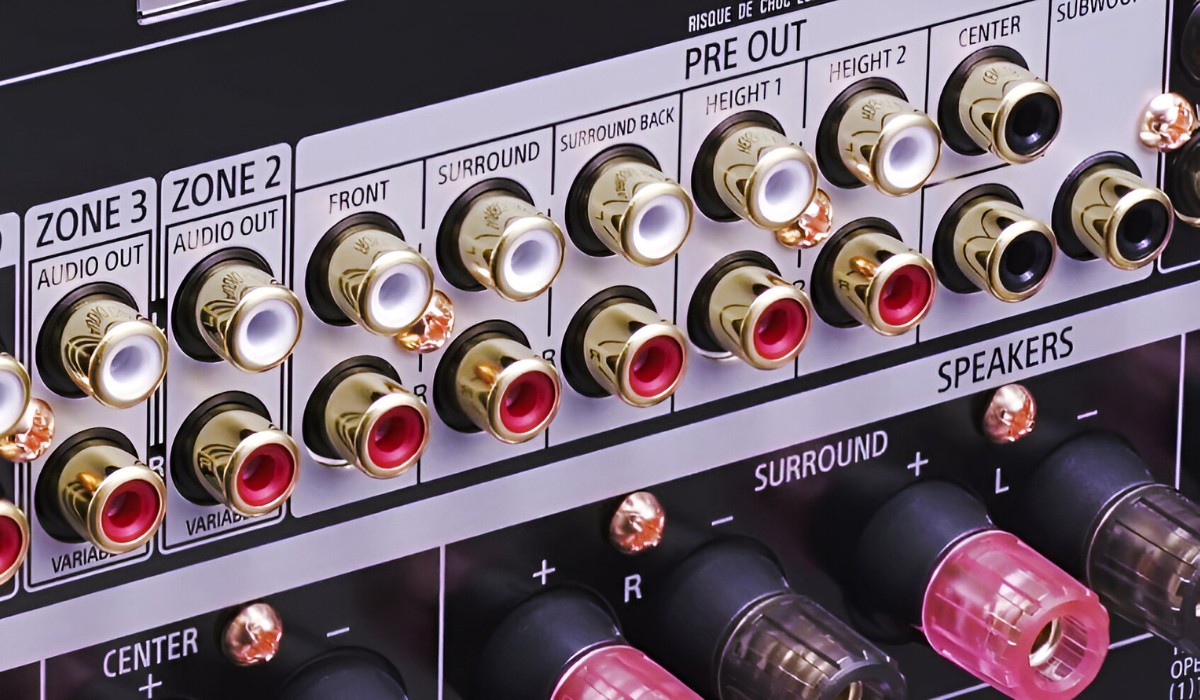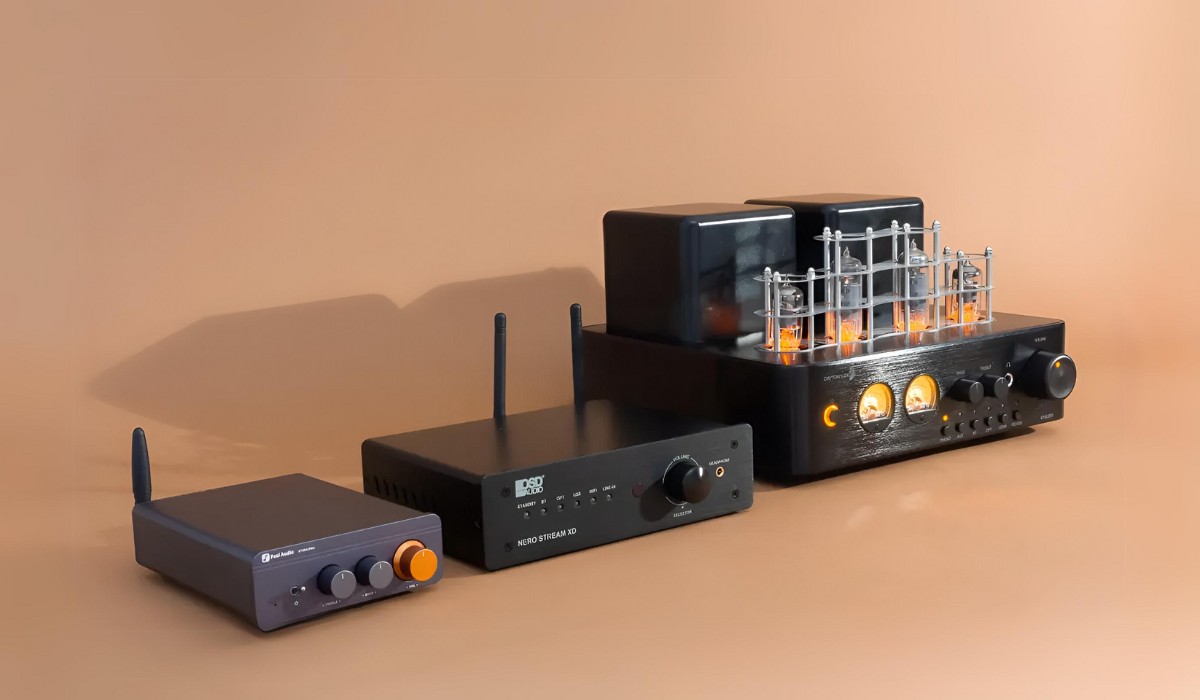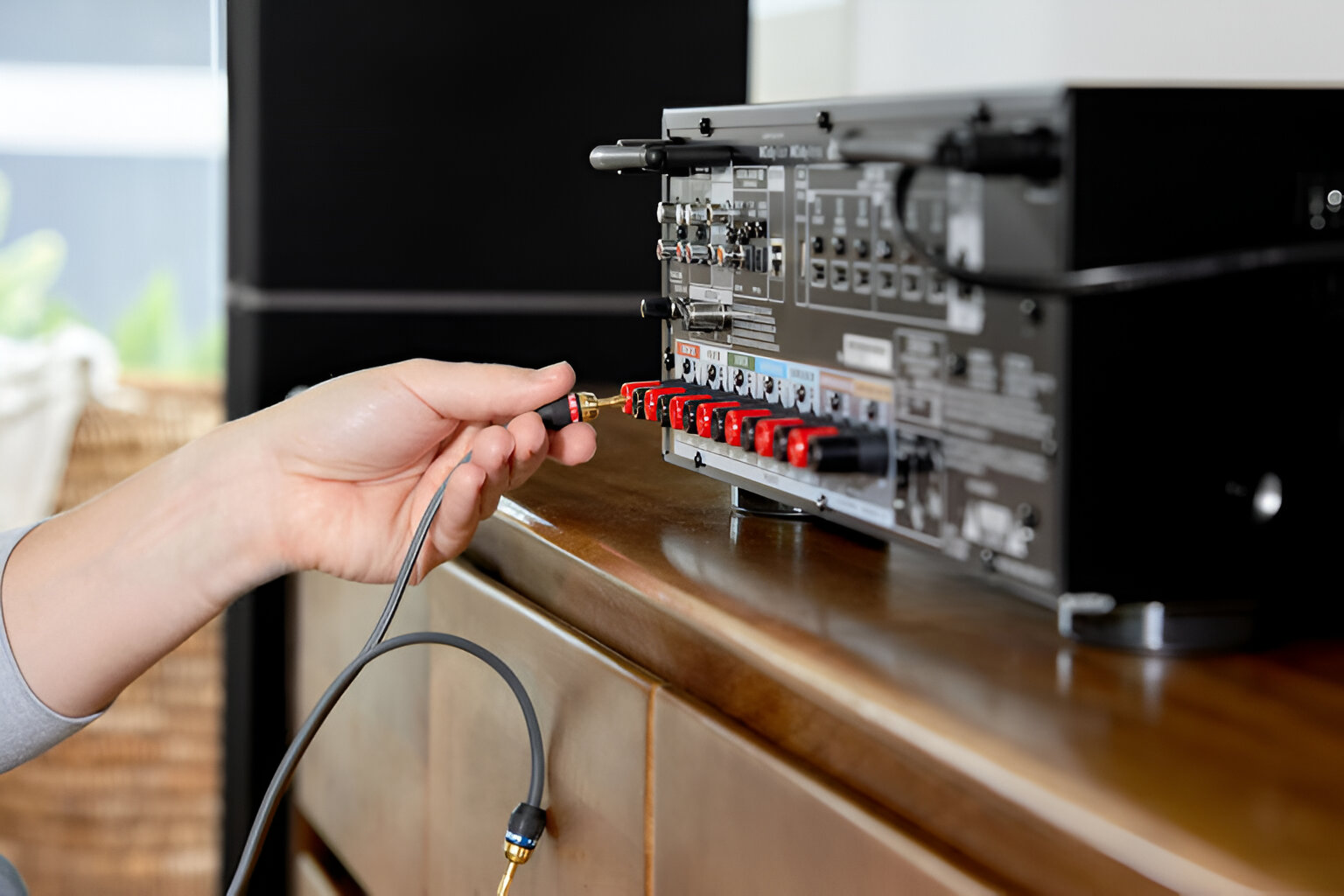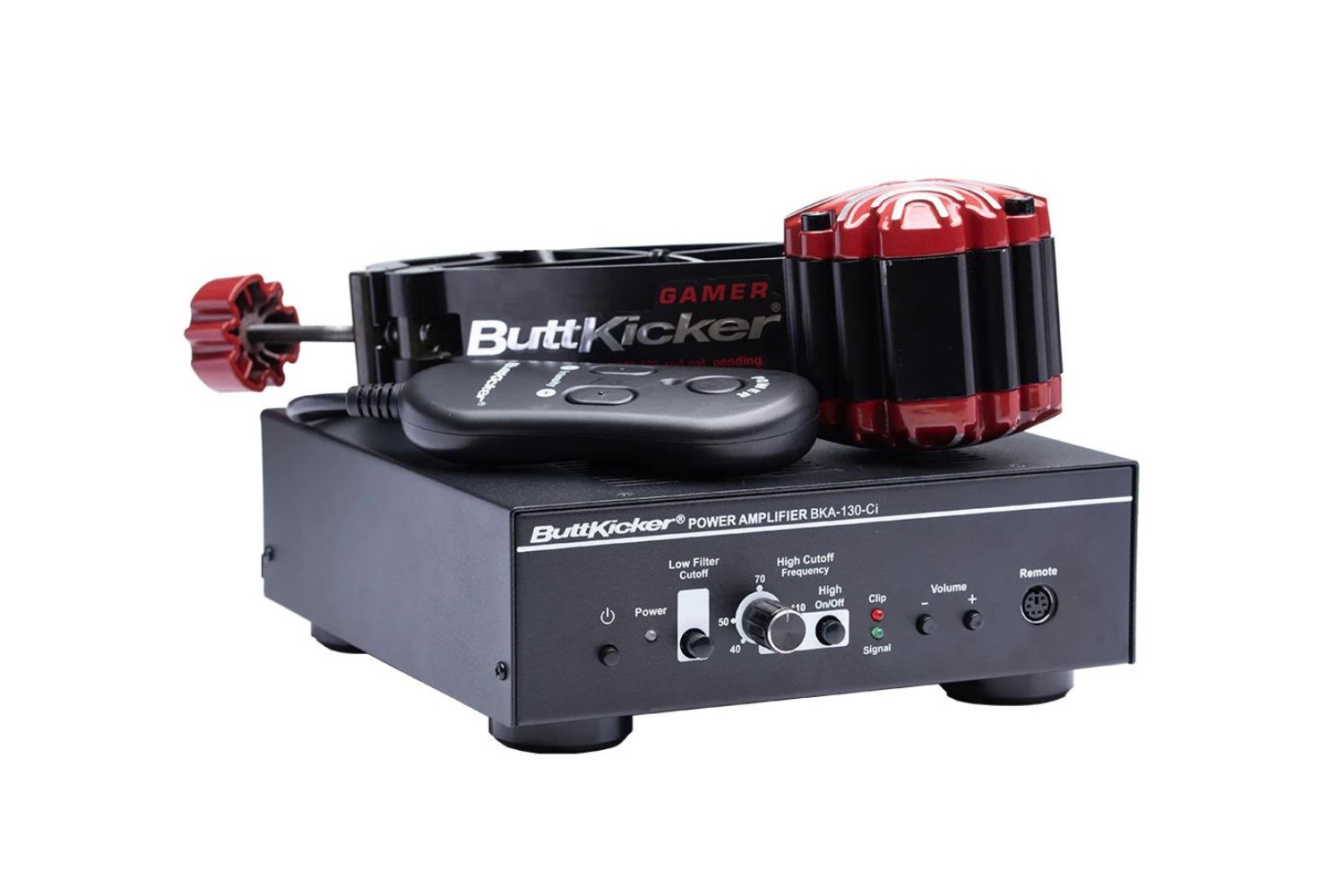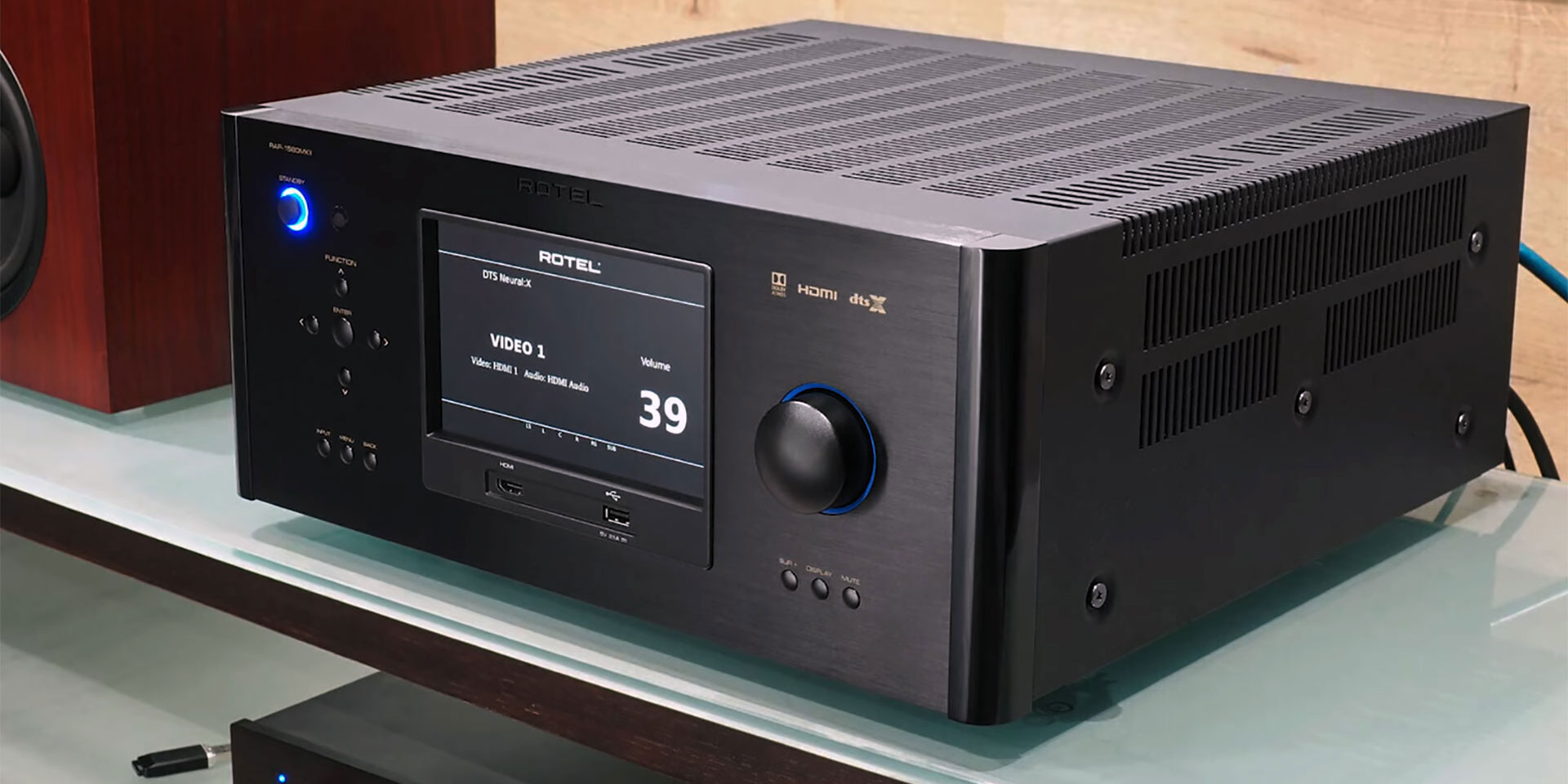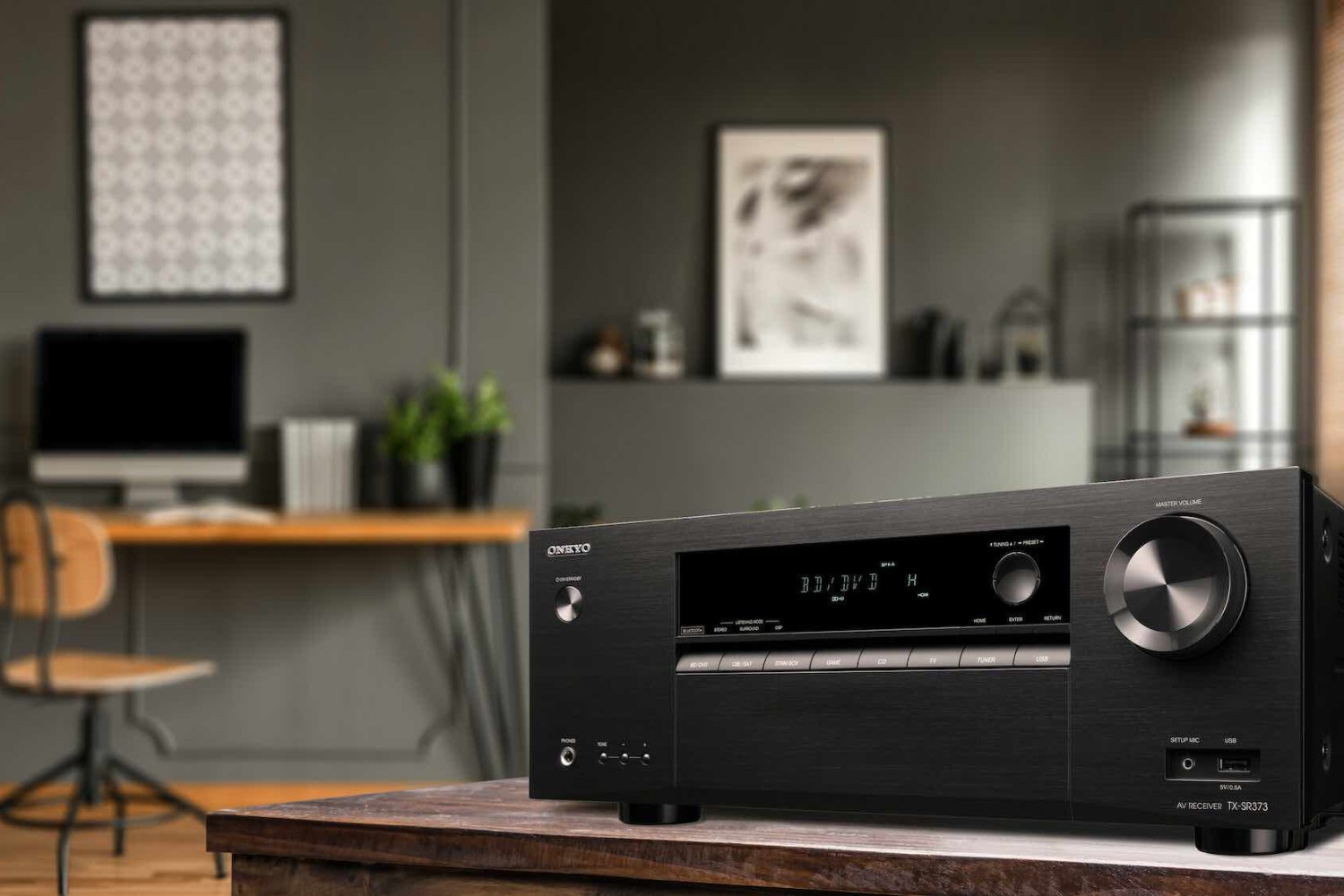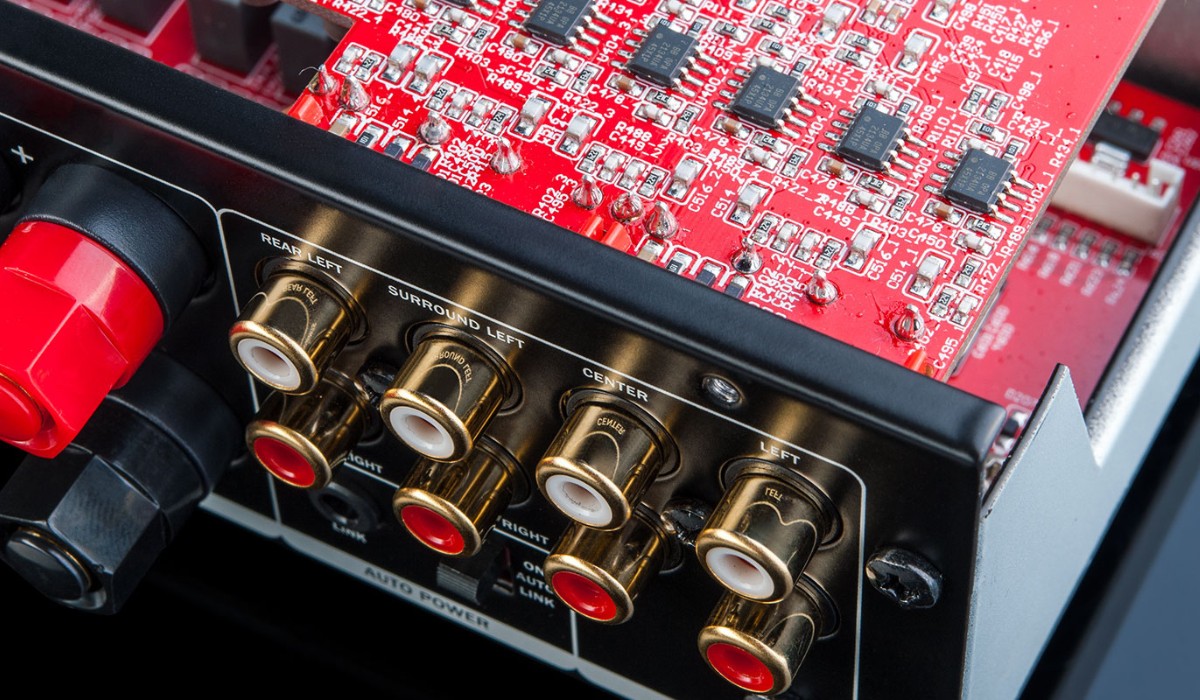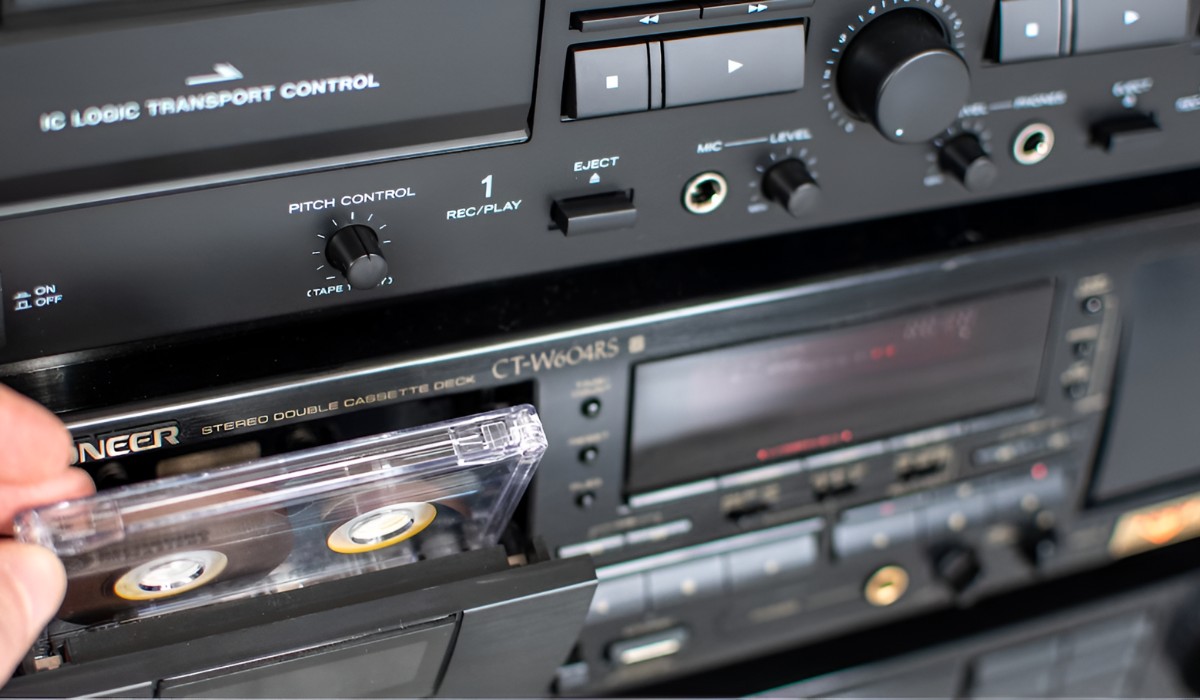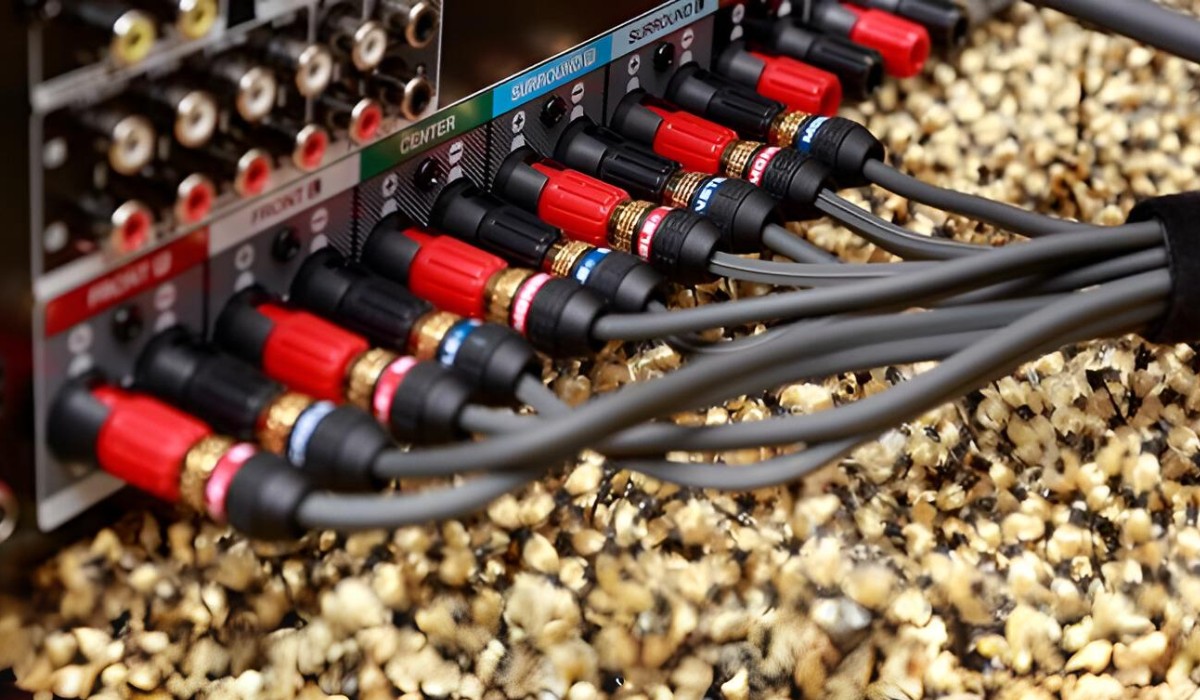Introduction
Welcome to the world of audio-visual (AV) receivers! If you're passionate about creating an immersive audio experience, understanding how to use pre-outs in an AV receiver is essential. Pre-outs, short for preamplifier outputs, provide a gateway to expand and customize your audio setup, offering a myriad of possibilities for enhancing sound quality and flexibility.
AV receivers serve as the central hub for your home entertainment system, acting as a powerhouse for audio and video processing. They are equipped with various inputs and outputs, including pre-outs, which allow you to connect external amplifiers, subwoofers, and even set up multi-zone audio systems. By tapping into the potential of pre-outs, you can elevate your audio experience to new heights, whether you're a dedicated audiophile, a home theater enthusiast, or simply someone who appreciates high-quality sound.
In this guide, we'll delve into the intricacies of pre-outs, exploring how they function, how to connect them to external amplifiers, and the diverse ways in which they can be utilized. Whether you're a seasoned AV aficionado or a newcomer to the world of audio equipment, this comprehensive overview will equip you with the knowledge and confidence to optimize your AV receiver's capabilities.
So, grab your favorite beverage, settle into your listening space, and let's embark on a journey to unlock the potential of pre-outs in your AV receiver. Whether you're aiming to achieve thunderous bass, crystal-clear highs, or seamless multi-room audio, understanding pre-outs is the first step toward customizing your audio setup to suit your preferences and elevate your listening experience.
Understanding Pre-Outs
Pre-outs, also known as preamp outputs, are a fundamental feature of AV receivers that play a crucial role in customizing and expanding your audio system. These outputs are designed to deliver low-level audio signals to external amplifiers or powered speakers, allowing for greater control over the amplification and fine-tuning of audio signals before they reach the power amplification stage.
When examining the rear panel of an AV receiver, you'll typically find pre-outs labeled for various channels, such as front left/right, center, surround, and surround back. These preamp outputs correspond to the audio channels processed by the receiver, providing an avenue for external amplification tailored to specific speaker configurations.
One of the key advantages of pre-outs is the ability to offload the amplification duties to dedicated power amplifiers, which can significantly enhance the overall power and quality of the audio signal. By utilizing preamp outputs, you can achieve greater headroom, reduced distortion, and improved dynamics, especially when driving demanding or high-performance speakers.
Furthermore, pre-outs empower you to integrate specialized amplifiers into your system, such as mono-block amplifiers for individual channels or multi-channel power amplifiers designed to handle the entire surround sound setup. This flexibility allows for a more personalized approach to amplification, catering to the specific requirements of your speakers and room acoustics.
Understanding the role of pre-outs is pivotal in harnessing the full potential of your AV receiver, as it opens up opportunities for precise calibration and optimization of your audio system. Whether you aspire to create a dedicated two-channel listening setup or a multi-channel home theater environment, comprehending the function and capabilities of preamp outputs is a cornerstone of crafting a tailored and high-fidelity audio experience.
Connecting Pre-Outs to External Amplifiers
Once you grasp the significance of preamp outputs, the next step is to harness their potential by connecting them to external amplifiers. This process involves establishing a seamless link between the pre-outs on your AV receiver and the inputs on your external amplifiers, ensuring a cohesive flow of audio signals for amplification.
The connection between pre-outs and external amplifiers typically involves the use of interconnect cables, commonly referred to as RCA cables. These cables transmit the low-level audio signals from the preamp outputs to the corresponding inputs on the external amplifiers, enabling the amplifiers to boost the signals to a level suitable for driving the connected speakers.
When connecting pre-outs to external amplifiers, it's essential to maintain signal integrity and minimize interference. Using high-quality shielded RCA cables and ensuring proper grounding can help mitigate potential signal degradation and noise, preserving the fidelity of the audio signals as they travel from the AV receiver to the amplifiers.
It’s important to consider the type and number of channels when connecting pre-outs to external amplifiers, as this will dictate the configuration of the interconnect cables and the corresponding inputs on the amplifiers. Whether you’re utilizing a stereo setup, a multi-channel surround sound system, or a combination of both, ensuring the correct routing and labeling of the cables is crucial for seamless integration.
Additionally, some AV receivers feature configurable settings for the preamp outputs, allowing you to customize the signal levels and frequency response to match the requirements of the connected amplifiers and speakers. This level of control empowers you to fine-tune the audio output and optimize the interaction between the receiver and external amplifiers, aligning them for optimal performance.
By establishing a robust and well-executed connection between the pre-outs of your AV receiver and external amplifiers, you pave the way for a heightened audio experience, characterized by enhanced dynamics, improved clarity, and the ability to unleash the full potential of your speakers. With a solid foundation in place, you’re poised to explore the myriad possibilities offered by preamp outputs and external amplification, setting the stage for an audio journey defined by precision and power.
Using Pre-Outs for Subwoofers
Subwoofers play a pivotal role in delivering impactful low-frequency reproduction, adding depth and richness to the audio playback. When it comes to integrating subwoofers into an AV receiver setup, utilizing the preamp outputs for subwoofers can significantly enhance the low-end performance and overall bass management of the system.
Many AV receivers feature dedicated preamp outputs specifically designed for subwoofers, often labeled as “LFE” (Low-Frequency Effects) or “Sub Out.” These pre-outs are tailored to accommodate the unique requirements of subwoofer amplification, providing a direct pathway for channeling low-frequency signals to the subwoofer amplifier or powered subwoofer.
By leveraging the preamp outputs for subwoofers, you can exercise precise control over the bass management and fine-tune the low-frequency reproduction to seamlessly integrate the subwoofer with the main speakers. This allows for a more cohesive and balanced soundstage, preventing the low frequencies from overpowering or muddying the overall audio presentation.
When connecting the preamp output for a subwoofer, it’s essential to use a high-quality RCA cable to maintain signal integrity and minimize interference. Additionally, some AV receivers offer dedicated subwoofer calibration features, such as crossover frequency adjustment and phase control, which can be accessed through the receiver’s menu system to optimize the integration of the subwoofer into the audio environment.
Furthermore, utilizing the preamp outputs for subwoofers enables seamless integration with advanced bass management systems and room correction technologies, allowing for precise calibration and optimization of the subwoofer’s performance based on the unique acoustics of the listening space.
Whether you’re aiming to reproduce the thunderous impact of a cinematic explosion or the subtle nuances of a double bass in a musical performance, leveraging the preamp outputs for subwoofers empowers you to achieve a refined and immersive low-frequency experience, elevating the overall audio fidelity and enriching the sonic landscape of your home entertainment system.
Using Pre-Outs for Zone 2 or Zone 3 Outputs
For enthusiasts seeking a multi-room audio setup or the ability to power speakers in additional zones, the utilization of preamp outputs for Zone 2 or Zone 3 outputs opens the door to a world of expanded audio distribution and flexibility within the home environment.
AV receivers equipped with Zone 2 or Zone 3 preamp outputs enable the routing of audio signals to external amplifiers, allowing for independent control and amplification of audio in secondary listening areas. This functionality is particularly valuable for creating a multi-room audio system, where different audio sources can be enjoyed simultaneously in distinct zones throughout the home.
When using preamp outputs for Zone 2 or Zone 3, it’s essential to consider the specific requirements of the external amplifiers or powered speakers in the secondary zones. By connecting the preamp outputs to the corresponding inputs on the external amplifiers, you establish a dedicated audio pathway for the secondary zones, enabling independent volume control and source selection for each zone.
Furthermore, some AV receivers offer the flexibility to assign different audio sources to Zone 2 or Zone 3, allowing you to enjoy music, radio, or other audio content in separate areas of the home without impacting the primary listening zone. This level of versatility enhances the overall usability and enjoyment of the AV receiver, catering to diverse listening preferences within the household.
Additionally, the integration of preamp outputs for Zone 2 or Zone 3 can be complemented by advanced control features, such as remote power triggers, to seamlessly activate and deactivate the external amplifiers in the secondary zones, providing a user-friendly and intuitive multi-room audio experience.
By harnessing the potential of preamp outputs for Zone 2 or Zone 3 outputs, you can create a dynamic and immersive audio environment that extends beyond the confines of a single room, enriching everyday living spaces with high-quality sound and personalized listening experiences tailored to individual preferences.
Conclusion
Embarking on a journey to understand and utilize the preamp outputs in an AV receiver unveils a realm of possibilities for customizing and optimizing your audio experience. From connecting pre-outs to external amplifiers to leveraging them for subwoofers and multi-zone outputs, the versatility of preamp outputs empowers you to tailor your audio setup to suit your preferences and elevate the overall sonic performance.
By comprehending the role of preamp outputs and the intricacies of their integration, you gain the knowledge and confidence to harness the full potential of your AV receiver, transforming it into a versatile and powerful centerpiece for your home entertainment system.
As you venture into the realm of preamp outputs, remember that attention to detail, such as using high-quality interconnect cables, optimizing settings, and considering the specific requirements of your speakers and listening spaces, can make a substantial difference in the overall audio fidelity and user experience.
Whether you’re aiming to create a captivating home theater environment, a dedicated two-channel listening space, or a multi-room audio setup, the utilization of preamp outputs offers a pathway to tailor your audio system to your unique preferences and requirements.
As you continue to explore the possibilities presented by preamp outputs, remember that the journey is as rewarding as the destination. Embrace the process of fine-tuning your audio setup, experimenting with different configurations, and discovering the nuances of audio reproduction that resonate with your individual tastes.
Ultimately, the understanding and utilization of preamp outputs in an AV receiver empower you to craft an audio experience that transcends mere sound reproduction, allowing you to immerse yourself in the full spectrum of sonic expression and enjoyment.







